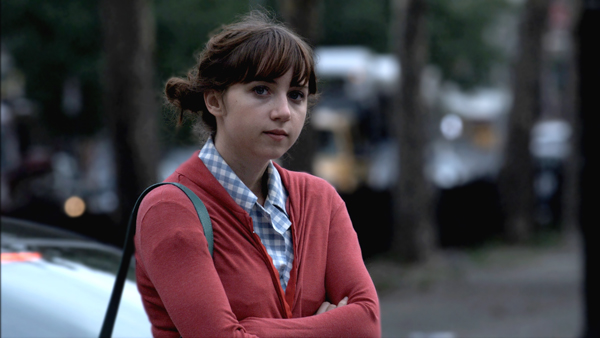|
Reviews of Recent Independent, Foreign, & Documentary Films in Theaters and DVD/Home Video

THE EXPLODING GIRL If only a few things happen in this film, at least they happen at exactly the right time. Within two scenes we know the boyfriend of college student Ivy won’t be visiting her over spring break, and her childhood friend, Al, couldn’t be happier about it. The film takes a long breath before its next move. Ivy, played by Zoe Kazan (the granddaughter of the director Elia Kazan), arrives back home to New York City and, for lack of a better term, nests. Her quiet and otherwise uneventful arrival affords us a chance to glimpse her Manhattan nesting grounds, but at the same time we are privy only to glimpses of Ivy herself. Writer and director Bradley Rust Gray gives us three very simple things here: the boy, the girl, and the city. He hoodwinks us a bit, though, in filming the proceedings as an observed process of nature. It’s a basic coming-of-age story, but so tender that the camera is not allowed anywhere near it, lest it scare away the youngsters. Ivy and Al, comfortable amid the chaotic jungle of lower Manhattan, are birds of paradise, and we’re lucky enough to witness their mating ritual, albeit from afar. Ms. Kazan is a unique star. She hasn’t yet discarded an adorable teenage awkwardness, yet everything about her promises there’s something more important in store for her. Perhaps it’s her lineage, but she gives the instant impression of being knowledgeable far beyond her years. However, Mark Rendall, who plays Al, is the catalyst here. Ivy’s passivity is countered by Rendall’s skillful construction of a very cool but emotionally vulnerable guy. The films of Gray’s wife and producing partner, Kim So Yong, are an obvious point of departure when discussing his own. In Between Days and Treeless Mountain both have such cultural importance for their strong portrayals of alienation, yet they’ve been somehow inaccessible to me due to their deeply personal material. Gray gives the impression more of an instructor. Where Kim’s films are beautiful, The Exploding Girl is pretty in its bare and generous honesty. Cinematographer Eric Lin often stations his camera across the street from the action, or behind a door frame, and much of the plot also happens at a distance. Ivy’s boyfriend is never seen, and we witness a moving, if not a little terrifying, breakup scene, which happens over the phone while Ivy’s walking on Houston in the middle of a busy afternoon. Ivy internalizes the news immediately, turns her back to us, and hurries away down the busy street. We’re left sitting alone, forced to deal with the emotions ourselves. Much of the dialogue feels improvised, so that it’s a small surprise to hear a scripted line. Very judiciously, Ivy’s epilepsy is revealed, reminding us why the film is thus titled. (Gray also describes the title as a reference to The Exploding Boy, which is the B-side to The Cure’s 1985 “In Between Days” single. Gray calls his film the B-side to Kim’s film of the same name). By the time she “explodes” into seizure, it’s revealed as another natural event, shown to us only partly, with a door obscuring the frame. Al remains by her side, and there is no doubt that the forced intimacy has solidified something between the two. The film ends as it began, with a decidedly uneventful
car ride back to school, though again even a small gesture carries as
much importance as anything in the film. The kids complete the ritual,
and again Gray allows just a glimpse of their feelings, but a remarkably
honest one. Michael Lee
|

